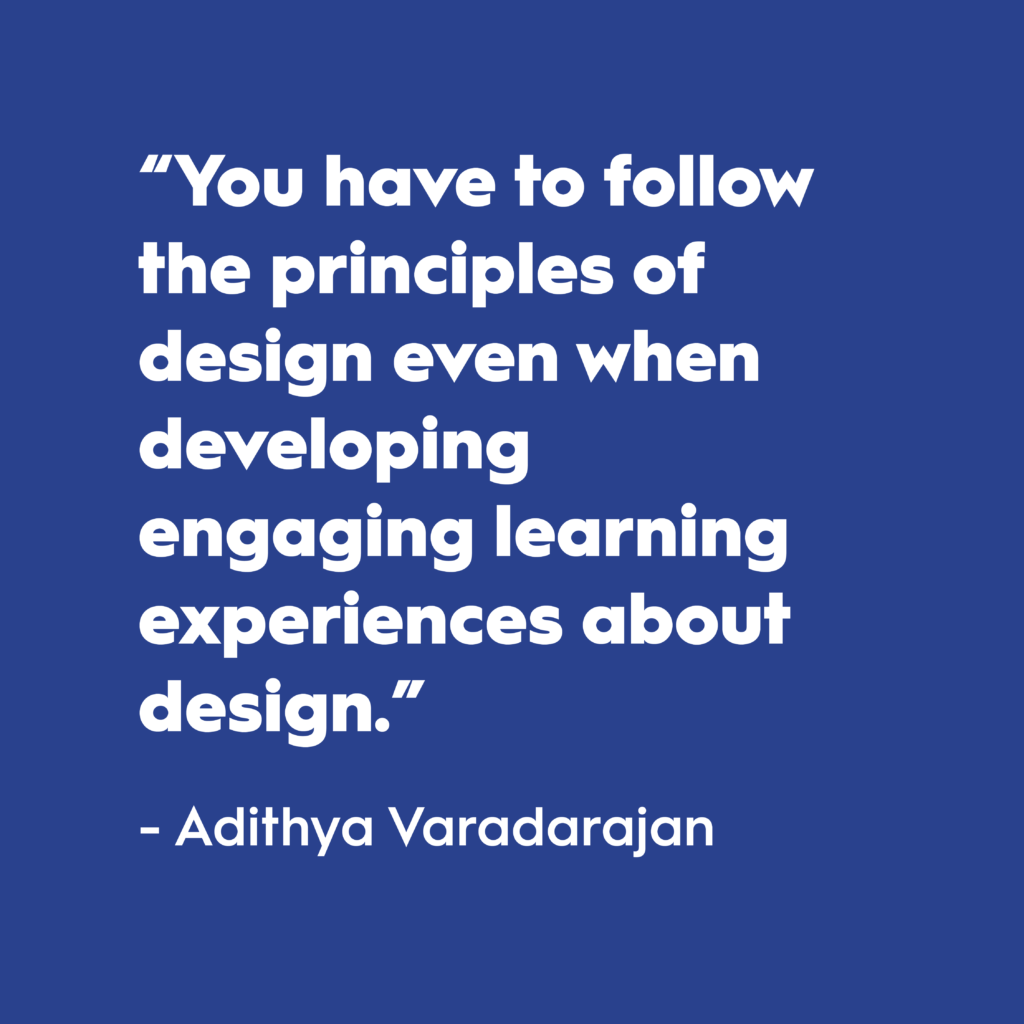Scope Q&A: Adithya Varadarajan
Meet Adithya Varadarajan, Scope’s Design Lead and expert on new digital services and learning environments. Based in Finland, Adi’s impressive career spans various countries and industries, including tech, energy, and financial sectors, where he solved complex issues with design, strategy, and futures thinking. With experience in product, UX, and service design, Adi has led the development of Kaleidoscope, Scope’s e-learning platform. He has also won the Danish Design Award as the co-founder of Nordic Rebels, a startup dedicated to transforming learning experiences and empowering changemakers. We talked with Adi about skills transfer, strategy building, and design’s ability to shape the world for the better.
What, in your view, is the key to creating an engaging digital learning experience?
Over the years as both a student and teacher, I’ve discovered several factors that contribute to making a learning experience engaging, regardless of whether it’s digital or delivered in person. With Kaleidoscope, we’ve started building learning content on creative problem-solving skills with design as one of the multidisciplinary lenses. The same way you want to understand the target audience, their context, and address their needs in a design process, you have to follow the principles of design even when developing engaging learning experiences about design. It’s important to understand what prospective learners are looking to learn about, the context in which they’re accessing content, and how they intend to use what they learn.
Once this is clear, it’s essential to keep in mind that digital learning isn’t just about recreating the physical learning experience, following a rigid course schedule or a series of lectures. Those who deliver learning experiences aren’t just competing for attention or quality of engagement with other learning platforms, but rather with content that is designed to attract attention and keep the audience hooked, the kind you would find on Youtube or even Tiktok. So how do you make sure that your content is simultaneously bite-sized and able to capture attention? This is the level of engagement, creativity, and understanding of the target audience necessary to create an effective digital learning experience.
What made you join Scope and shift focus to accelerating social impact in the health, equality, and climate space?
I started on my path of becoming a designer when I watched the movie The Fifth Element as a kid and was wowed by how the world in the 23rd century was envisioned. Since then, I was hooked on the idea of helping develop a better future for the world. Fast forward to 2016, I was working as a design consultant, delivering UX and service design for domains ranging from emerging tech and banking to energy and telecom. I enjoyed consulting because it allowed me to encounter new challenges and levels of complexity, finding ways to overcome them by blending approaches from design, strategy, and futures thinking.
At the same time, much of my work, and design in general, felt like it was in a rut. As designers, we’ve become so focused on reducing clicks, simplifying flows, and boosting sales that we’ve forgotten about design’s potential to challenge the status quo. This led me to quit my consulting job and move to Finland to reconnect with my dream of shaping better futures for the world. After a master’s degree in design management with a focus on sustainability, a startup looking to empower changemakers, and a global pandemic requiring the collective effort of the world, it all came together in 2020. That’s when I encountered and joined Scope. It has felt like the logical conclusion to the path I’ve been on, to accelerate social impact and use my skills and knowledge to truly make a difference.
You’re blending design and futures thinking to support Save the Elephants in shaping their new strategy. How do these approaches help create innovative directions for organisations?
Current strategic design approaches are excellent at capturing the sweet spot between the present state of customer and business needs as well as the overall feasibility to help chart out a direction to achieve business objectives and prioritise activities. Futures thinking brings in the missing element – the ability to anticipate and navigate the uncertainty emerging from external contexts that can impact the business objectives, activities, and directions a company can take. Looking at micro and macro trends that impact both the immediate domain and the world at large helps paint a picture of the future context where the organisation has to exist, allowing it to better prepare and adapt for things to come.
With Save the Elephants (STE), we’re accounting for broader contextual factors that impact the organisation, using a traditional strategic approach to capture the effects of political, social, and environmental factors, among others, on the present-day organisation. We’re then applying futures thinking by taking each of these relevant factors and using trends analysis to forecast and define probable and possible future outcomes based on how these factors would evolve and impact the organisation’s mandate, informing STE’s future vision. This approach provides a more holistic view of the challenges and opportunities ahead, allowing the organisation to chart an innovative strategic roadmap forward that is more resilient to changes in extrinsic factors and, thus, has a greater chance of success.
Photo credit: Kalle Kataila
Back to news
